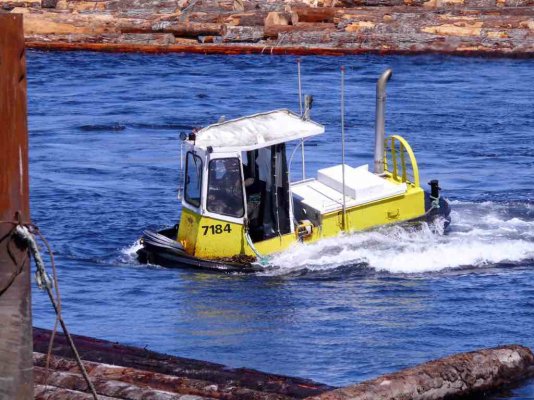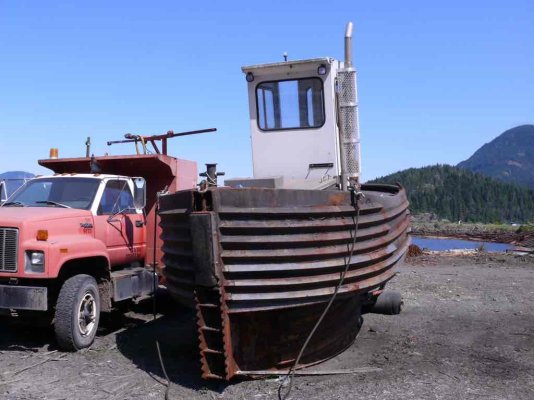During the process of gathering information on Minstrel Island for my current writing project we stopped in at the town of Sayward on the northeast coast of Vancouver Island on our drive up to Telegraph Cove. The harbor is called Kelsey Bay and it was the southern terminus of the Prince Rupert-Vancouver Island ferry run until the terminal was moved farther north to Port Hardy. When I and my friend took this ferry with my Land Rover in 1977, we came here.
The terminal is long gone but the harbor is still an active logging site with a dry-land sort yard and log raft building operation. A boom boat was busy in the harbor and I shot these photos. The choppy water in the background is the infamous Johnstone Strait.
Boom boats have fascinated me ever since I saw my first one in action and I've always wanted to learn to drive one. During our trip I talked to one of the operators and he said that when we come up next year he'll let me ride with one of his drivers and take a shot at it. We'll see what happens......
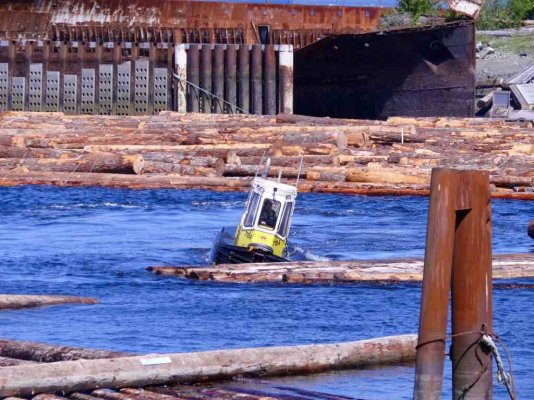
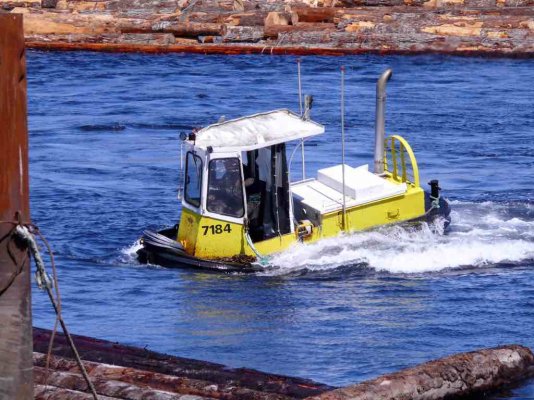
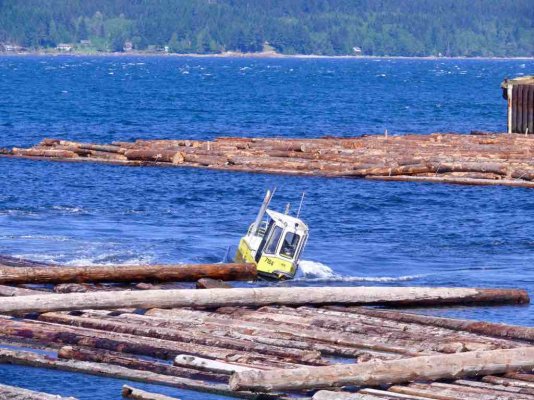
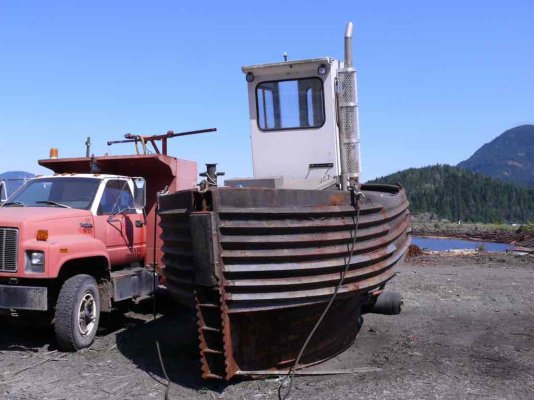
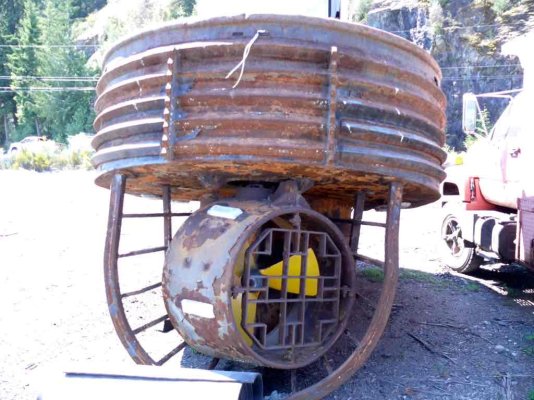
The terminal is long gone but the harbor is still an active logging site with a dry-land sort yard and log raft building operation. A boom boat was busy in the harbor and I shot these photos. The choppy water in the background is the infamous Johnstone Strait.
Boom boats have fascinated me ever since I saw my first one in action and I've always wanted to learn to drive one. During our trip I talked to one of the operators and he said that when we come up next year he'll let me ride with one of his drivers and take a shot at it. We'll see what happens......







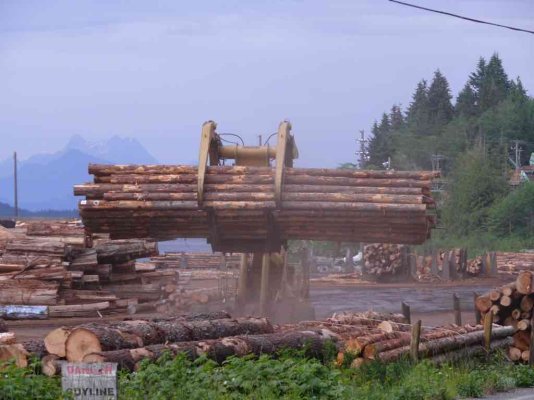
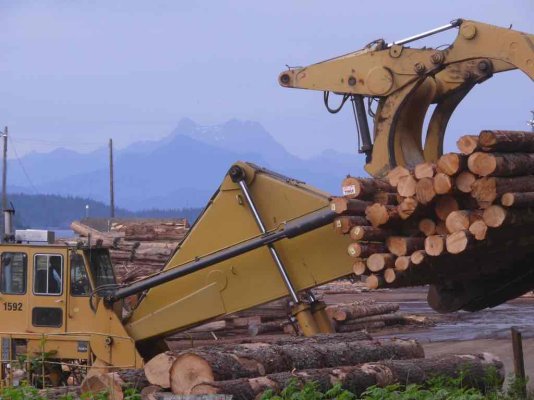
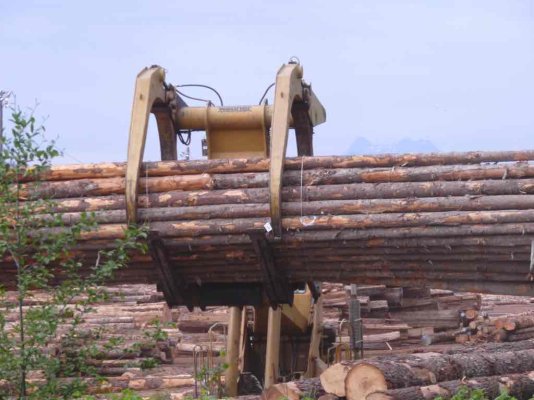

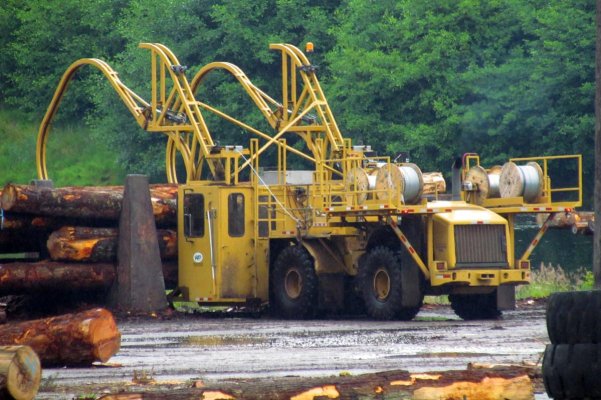
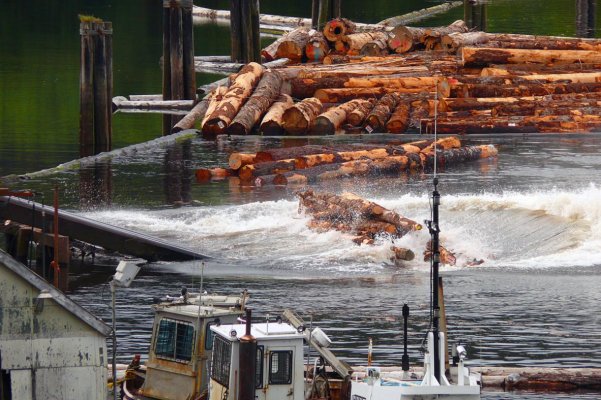
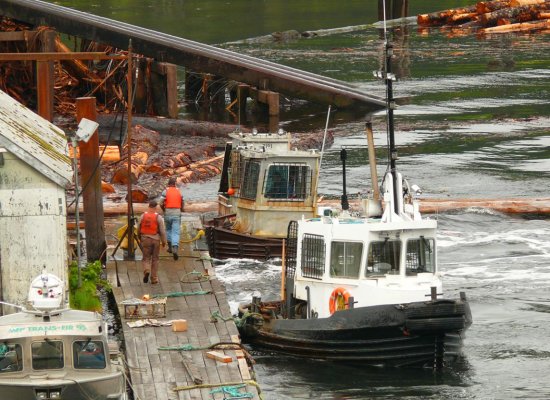
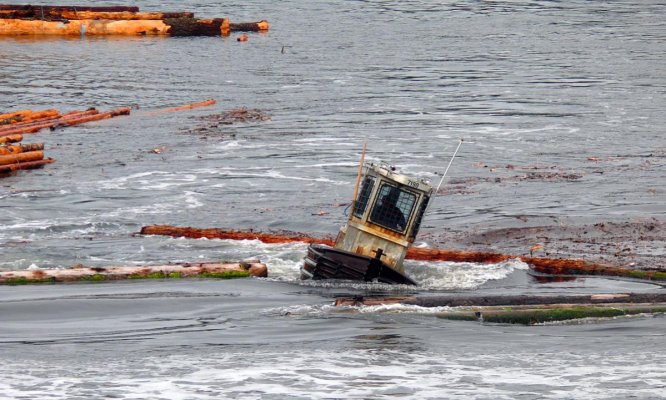
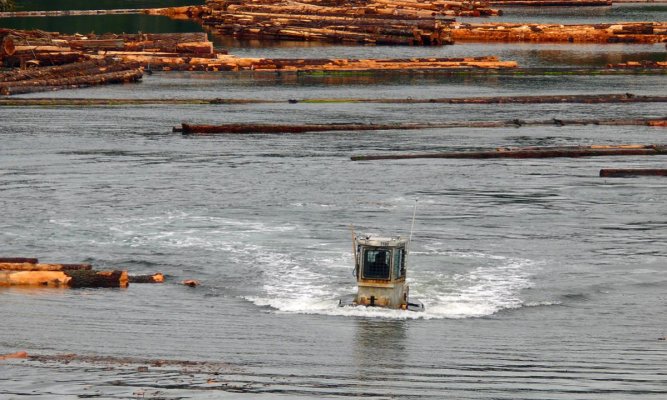
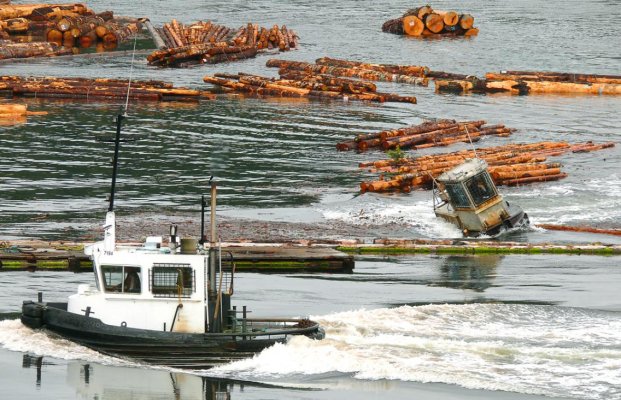
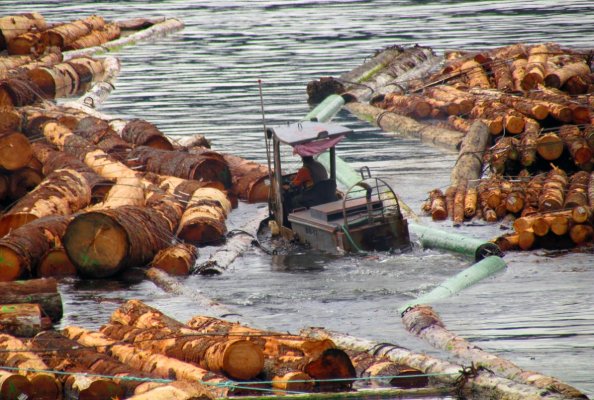
 Still waiting on the water slide, then maybe a boom boat!
Still waiting on the water slide, then maybe a boom boat!